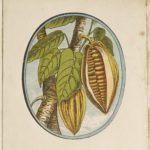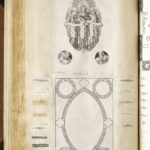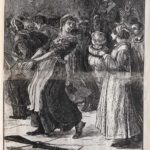Exhibition Intro ~ Map ~ Next Section
Click a thumbnail to enter the gallery. Use the arrows at either side of the image to skip forward or back.
For Dalziel and their employees, making illustrations was both their art and trade, and here we explore the processes and materials of printmaking and books. Images range from a self-reflexive portrait of wood engraving hands (standing in for the hands of many engraver-employees who laboured to make images for Dalziel – see no. 3 in the gallery above) to prints that show evidence of the production process. For example, a proof from Through the Looking-Glass has been touched by Tenniel to indicate the alterations he wanted; the pencil note at the top requests ‘Fine lines between the rays’ (no. 19).
In this section, the first two images are pictorial celebrations of the book as an object. As mentioned in the exhibition introduction, the small door to Wonderland, in front of which Alice stands in image one, can be read as a symbol of the illustrated book, waiting to be opened.
Making an illustrated book was a complex process. As well as the writer and publisher, the draughtsmen or draughtswomen and wood engravers, there was the printer, the book binder, the paper manufacturer, and many others. Simply preparing a woodblock so that it was ready for engraving and printing was a specialist skill. The dense blocks had to be utterly smooth and flat, and exactly the correct height to range with type. Many blocks carry the same maker’s stamp on their sides: ‘C Wells, inventor, 24 Bouverie Street, London’. Then there were the compositors, who set the metal type for printing, letter by letter. Image ten is a pictorial capital of a fantastical subject, but the fairy who carries the letter ‘F’ can be imagined as a portrait of the compositor carrying a piece of type. Images three to six reflect on the illustrated book trade, with illustrations of a printer at a press (no. 4), a wood engraver’s hands and graver (no. 3), and some of the numerous company logos that Dalziel created, both for themselves and for commercial publishers and printers (no. 6). Following this are two comic images that remind us of the materiality of pens and of ink (nos. 7–8), and some proofs of packaging for packets of paper (no. 9), that give an insight into the taste of Victorian consumers, who bought nostalgic products such as ‘Antique Vellum’ notepaper.
Several wood engravings also give an indication of Dalziel’s role in book design, such as book covers and pictorial initials (nos. 10–12). There are many proofs that show evidence of corrections made to woodblocks during the illustration process, both for Alice and other works (nos. 13–19). And finally, there are examples of colour printing (nos. 20–21) and of the fragmentation process whereby large wood engravings had to be made from many small blocks bolted together (no. 22). This was because large blocks cannot be obtained from boxwood, since the trunks have a small diameter.
Bethan Stevens

![Dalziel after John Tenniel, illustration for ‘Down the Rabbit-Hole’, in Lewis Carroll [Charles Lutwidge Dodgson], Alice’s Adventures in Wonderland](http://www.sussex.ac.uk/english/dalziel/wp-content/uploads/2016/07/PB-1-20_p135.jpg-detail-5-150x150.jpg)
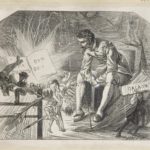
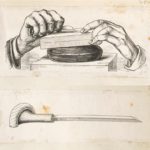
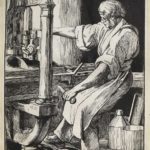
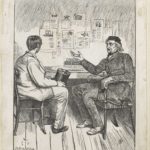
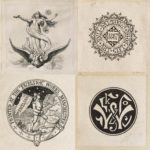
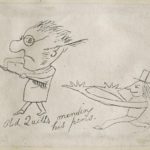
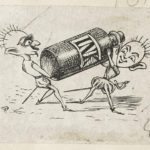
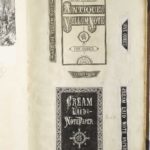
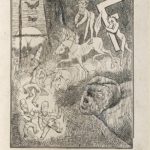
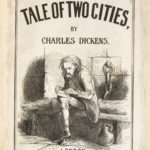
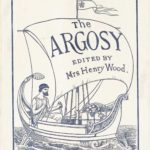
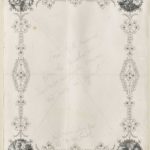
![Dalziel after John Tenniel, illustration for ‘Who Stole the Tarts’, in Lewis Carroll [Charles Lutwidge Dodgson], Alice’s Adventures in Wonderland](http://www.sussex.ac.uk/english/dalziel/wp-content/uploads/2016/07/PB-14-20_p138-detail-4.jpg-150x150.jpg)
![Dalziel after John Tenniel, illustration for ‘Who Stole the Tarts’, in Lewis Carroll [Charles Lutwidge Dodgson], Alice’s Adventures in Wonderland](http://www.sussex.ac.uk/english/dalziel/wp-content/uploads/2016/07/PB-15-20_p140.jpg--150x150.jpg)
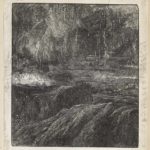
![Dalziel after John Tenniel, illustration for 'Wool and Water', in Lewis Carroll [Charles Lutwidge Dodgson], Through the Looking-Glass, and What Alice Found There](http://www.sussex.ac.uk/english/dalziel/wp-content/uploads/2016/07/PB-17-28_p152.jpg-detail-4-150x150.jpg)
![Dalziel after John Tenniel, illustration for 'Wool and Water', in Lewis Carroll [Charles Lutwidge Dodgson], Through the Looking-Glass, and What Alice Found There](http://www.sussex.ac.uk/english/dalziel/wp-content/uploads/2016/07/PB-18-Living-backwards-150x150.jpg)
![Dalziel after John Tenniel, illustration for 'Queen Alice', in Lewis Carroll [Charles Lutwidge Dodgson], Through the Looking-Glass, and What Alice Found There](http://www.sussex.ac.uk/english/dalziel/wp-content/uploads/2016/07/PB-19-28_p157.jpg-detail-2-150x150.jpg)
